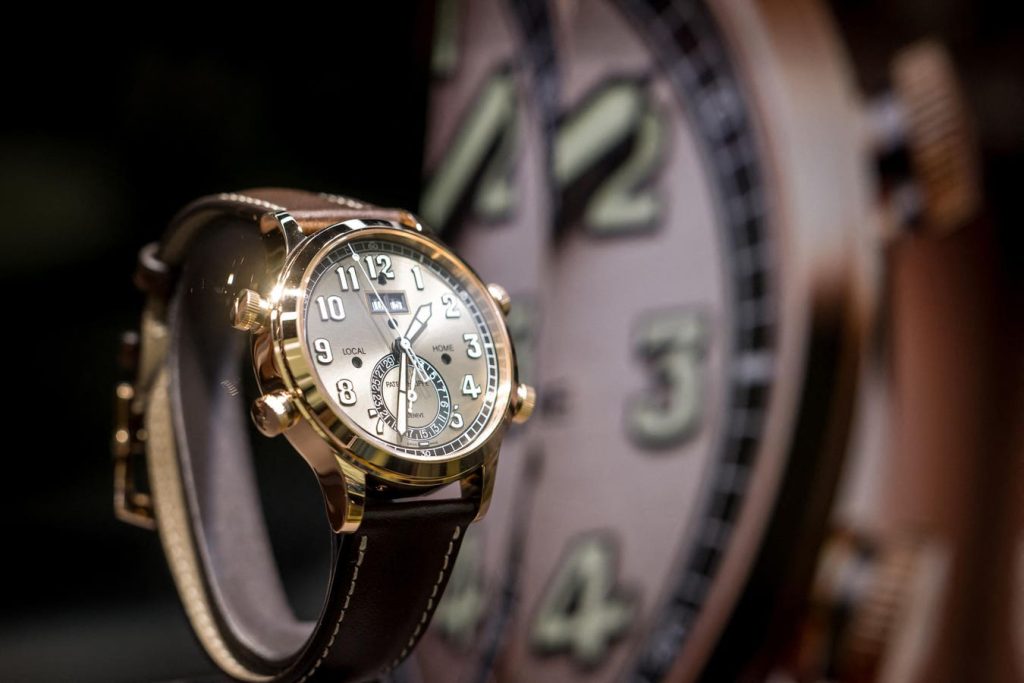Demand for luxury watches soared during the pandemic as consumers flush with cash and a growing interest in collectibles clamored to buy brand-name timepieces. A huge gap emerged between supply and demand, driving up secondary market prices well above retail value. The top of the market was established in March 2022 when the Federal Reserve started to raise rates. Since then, prices for all the major watch brands have plummeted. Fortunately, for new enthusiasts who are patient, trends indicate there may be an even better time to buy.
According to the WatchCharts Overall Market Index, which tracks secondary market prices of 60 watches taken from the top 10 luxury watch brands, sorted and weighted by transaction value, prices have fallen roughly 40% from their 2022 high. The index peaked near $48,000 and recently made a new low at $29,368. The index had declined for eight quarters in a row.
Weak demand is beginning to hit exports. Swiss watch exports, manufactured by industry titans like Rolex, Patek Philippe, and Audemars Piguet, which account for two-thirds of all transactional values, plunged 16.1% year-on-year through March. Measured by volume, wristwatch exports in March were down 25.4%, according to figures released by the Federation of the Swiss Watch Industry. This translated into almost 400,000 fewer watch exports compared to March 2023, with all price segments affected by the decline.
Most markets saw weaker demand in March. Exports to the U.S. fell by 6.5%, shipments to Japan declined by 3.5%, and demand in China suffered a drop of 41.5%, falling below that of March 2020. Sales decreased across all price ranges. Specifically, export sales of watches priced at more than 3,000 francs dropped by 9.9%. However, the decline was more significant for lower-priced products: a decrease of 18.8% for items priced below 500 francs and a further reduction of 38.2% for products priced between 500 and 3,000 francs.
Lower prices have yet to bring in new demand. Some of this may be because the most prominent brands are still trading at a premium in the secondary market compared to their retail value. With the help of proprietary pricing data from WatchCharts.com, Morgan Stanley
Morgan Stanley
recently released a report highlighting some key industry metrics through the end of Q1 in 2024.
According to the data in the report and published information on the WatchCharts website, some brands still command a premium relative to their retail price. Patek watches have a 32.3% premium, or “retained value,” Rolex has a 21.6% premium, and AP watches are trading at 15.4% above retail. All the other major brands have watches that, on average, are valued below their retail price.
Unlike in other industries, elite watchmakers did not ramp up production during times of excess demand. Supply is relatively fixed. Many of these watches are complicated to produce, and much of the production process is done by hand, making it tough for these brands to increase output.
Rolex production is estimated to be around 1 million watches a year, versus a brand like Patek Philippe, which only makes around 60,000 pieces annually. Then there are some exotic brands like Richard Mille, which only produces around 5,000 watches, and even more niche brands like F.P. Journe, which reportedly make fewer than 1,000 pieces in a year. There is even a microbrand market, where industry legends like Naoya Hida produce fewer than 100 watches every 12 months.
The microbrand segment of the market, so far, has been relatively immune to the industry downturn. “We expect 2024 to be a good year for us, as we are still receiving a great many inquiries from around the world,” Hida said regarding the demand for his handcrafted, artisanal watches. Some of these highly coveted microbrands followed by true collectors did not experience the same speculative attention as globally recognized brands like Rolex; there was virtually no supply in the retail or secondary market.
One of the problems for the industry, especially for the well-known brands with the most significant increase in values, is the build-up of inventories at watch dealers coming from secondary market supply. In 2023, the median age of Rolex watches advertised on the secondary market increased by 25%, Patek Philippe inventory increased by 46%, and Audemars Piguet grew by 25%. Inventories continued to build through Q1 of 2024 and the median age of inventory, or the duration purchased inventory is held, remains near three-year highs and is more than four times the level from two years ago. Dealers must work through this inventory build before secondary watch prices can make a meaningful move higher.
Looking at the share prices of some of the publicly traded watch dealers tells a similar cautious story. For example, the stock price of Watches of Switzerland Group PLC, a British retailer with 16 stores in the U.K. and a constituent of the FTSE 250, is hovering near a five-year low of 339 British pence, down significantly from a high of 1512 pence in December 2021. If stock prices are supposed to anticipate higher earnings, the outlook for renewed luxury watch demand does not look good.
When can watch aficionados expect a turnaround? Several headwinds must be addressed:
- Demand from major markets like the U.S. and China needs to recover.
- Dealer inventory needs to be worked through.
- Sentiment for luxury items and collectibles needs to improve.
Lower real and nominal interest rates can reduce inventory costs and help dealers avoid forced liquidations. A lower interest rate environment may also induce buyers to move out of cash holdings and back into non-income-producing assets, increasing the demand for watches and other luxury items. In the meantime, watch industry observers who missed the stratospheric climb in prices during the pandemic should look for signs of capitulation as a signal to buy.
Read the full article here

